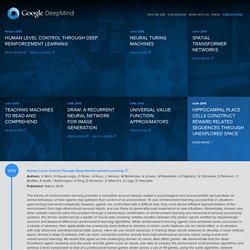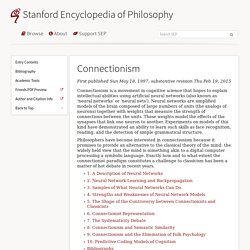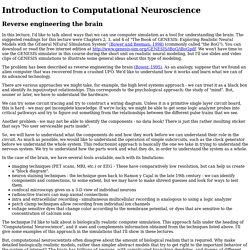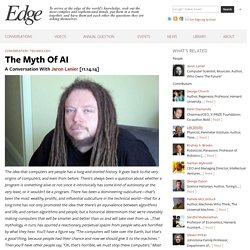

Intentional action - Dictionary of Philosophy of Mind. Details: People normally distinguish between behaviors that are performed ‘intentionally’ and those that are performed ‘unintentionally.’

But philosophers have found it quite difficult to explain precisely what the distinction amounts to. So, for example, there has been a great deal of controversy over the relationship between the concept intentional and the concept intention. Many philosophers accept the so-called ‘Simple View,’ according to which a behavior cannot correctly be considered ‘intentional’ unless the agent had an intention to perform it (Adams 1986; McCann 1986). However, Michael Bratman has argued in a series of influential publications that it is sometimes possible for an agent to intentionally perform an action even when he or she did not specifically intend to perform that action (Bratman 1987, 1984).
A similar controversy surrounds the problem of side effects. Finally, a particularly complex and thorny puzzle concerns the issue of deviant causal chains. MindPapers: Contents. Search tips There are two kinds of search you can perform on MindPapers: All fields This mode searches for entries containing the entered words in their title, author, date, comment field, or in any of many other fields showing on MindPapers pages. Entries are ranked by their relevance as calculated from the informativeness of the words they contain and their numbers. You may search for a literal string composed of several words by putting them in double quotation marks (") Metzinger Windt OpenMIND Collection PDF.
Cracking the Neurexin Code of Neural Circuits.
Neural Syntax. GRE psych. Natural Science II. Brain and Cognitive Sciences. Special Issue on Realistic Neural Modeling - WAM-BAMM'05 Tutorials — Brains, Minds & Media. Sparse Distributed Representation (SDR) Karl_neural_code.pdf. Home Page Dr. Michael Dawson. Tutorials. Directory of Functions. NeuroLex. From NeuroLex Principal neuron This table is generated programmatically from the property "Role" assigned to members of the Neuron class.

To add to this list, go to the category page for the type of neuron you are interested in adding and add "Principal neuron role" to the "Has role" field in the Petilla form. This table is also available in CSV Overview Detail *Note: Neurolex imports many terms and their ids from existing community ontologies, e.g., the Gene Ontology. 1976colourcurrency.pdf. Google DeepMind. ArXiv 2014 Neural Turing Machines Neural Turing Machines (NTMs) couple differentiable, external memory resources to neural network controllers.

Unlike classical computers, they can be optimized by stochastic gradient descent to infer algorithms from data. arXiv 2015 Spatial Transformer Networks We introduce a new learnable module, the Spatial Transformer, which explicitly allows the spatial manipulation of data within a neural network. arXiv 2015 Teaching Machines to Read and Comprehend We define a new methodology for capturing large scale supervised reading comprehension data, as well as novel mechanisms for teaching machines to read and comprehend. ICML 2015 Universal Value Function Approximators UVFAs jointly represent many goals/rewards simultaneously and generalize to unseen ones; a factored embedding approach makes training efficient. Reward Sequences (?? No de novo preplay ??) [Editors’ note: the author responses to the first round of peer review follow.]

We have been able to address the main concerns and suggestions raised, and have conducted numerous additional analyses all of which support our original conclusions. In light of the reviewers’ comments and the new analyses we have extensively revised our manuscript, which we now present for resubmission. In brief, the main changes are: Dopamine, uncertainty and TD learning. 2014 Phillip Sharp Lecture in Neural Circuits: Dr. May-Britt Moser. Backpropagation. A single-layer network has severe restrictions: the class of tasks that can be accomplished is very limited.

In this chapter we will focus on feed-forward networks with layers of processing units. Connectionism. 1.

A Description of Neural Networks A neural network consists of large number of units joined together in a pattern of connections. Units in a net are usually segregated into three classes: input units, which receive information to be processed, output units where the results of the processing are found, and units in between called hidden units. If a neural net were to model the whole human nervous system, the input units would be analogous to the sensory neurons, the output units to the motor neurons, and the hidden units to all other neurons. Here is a simple illustration of a simple neural net: Intro to CNS part I.
Reverse engineering the brain In this lecture, I'd like to talk about ways that we can use computer simulation as a tool for understanding the brain.

12. Learning: Neural Nets, Back Propagation. So how does the mind work. The Myth Of AI. That mythology, in turn, has spurred a reactionary, perpetual spasm from people who are horrified by what they hear.

You'll have a figure say, "The computers will take over the Earth, but that's a good thing, because people had their chance and now we should give it to the machines. " Then you'll have other people say, "Oh, that's horrible, we must stop these computers. " Most recently, some of the most beloved and respected figures in the tech and science world, including Stephen Hawking and Elon Musk, have taken that position of: "Oh my God, these things are an existential threat.